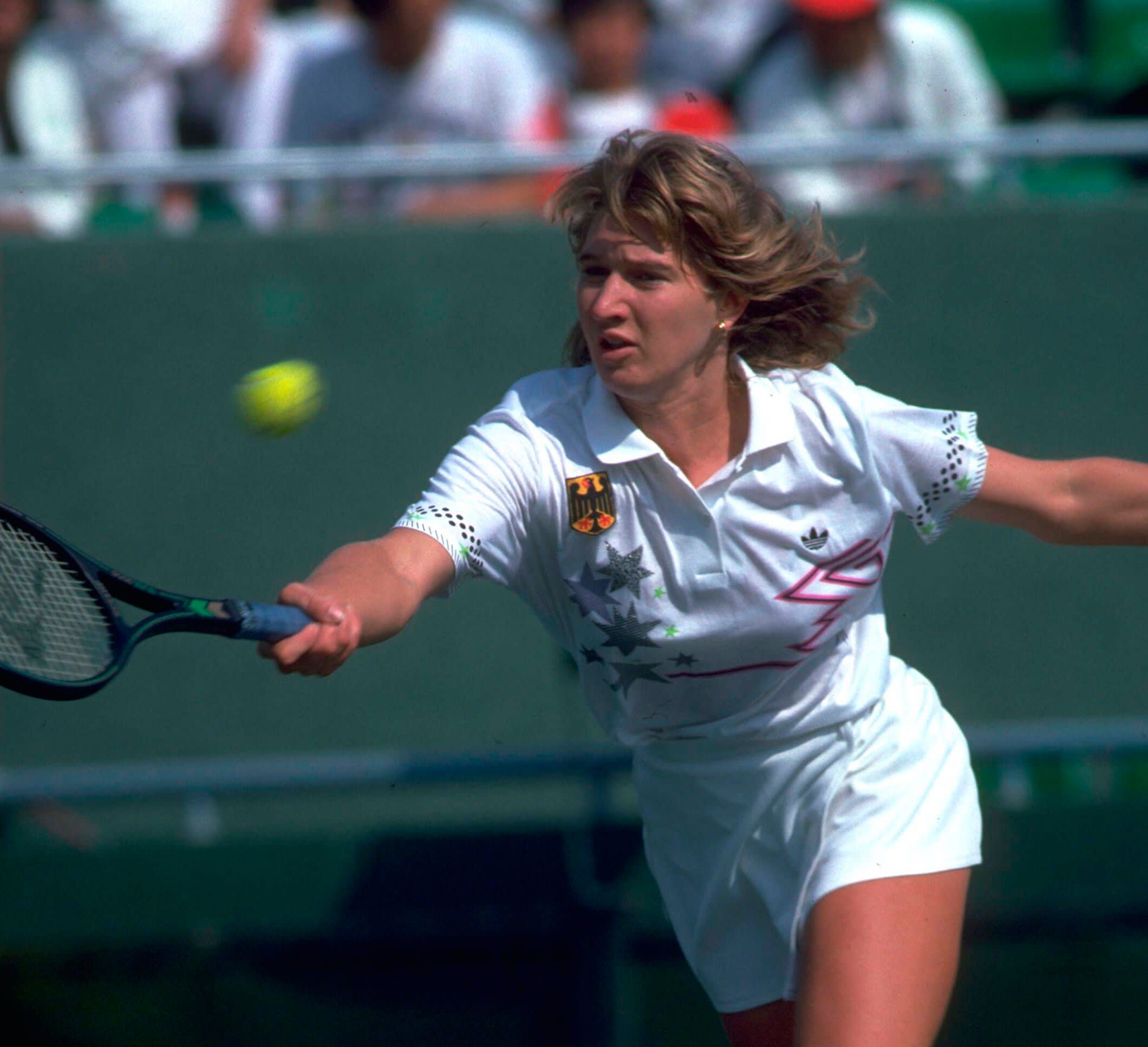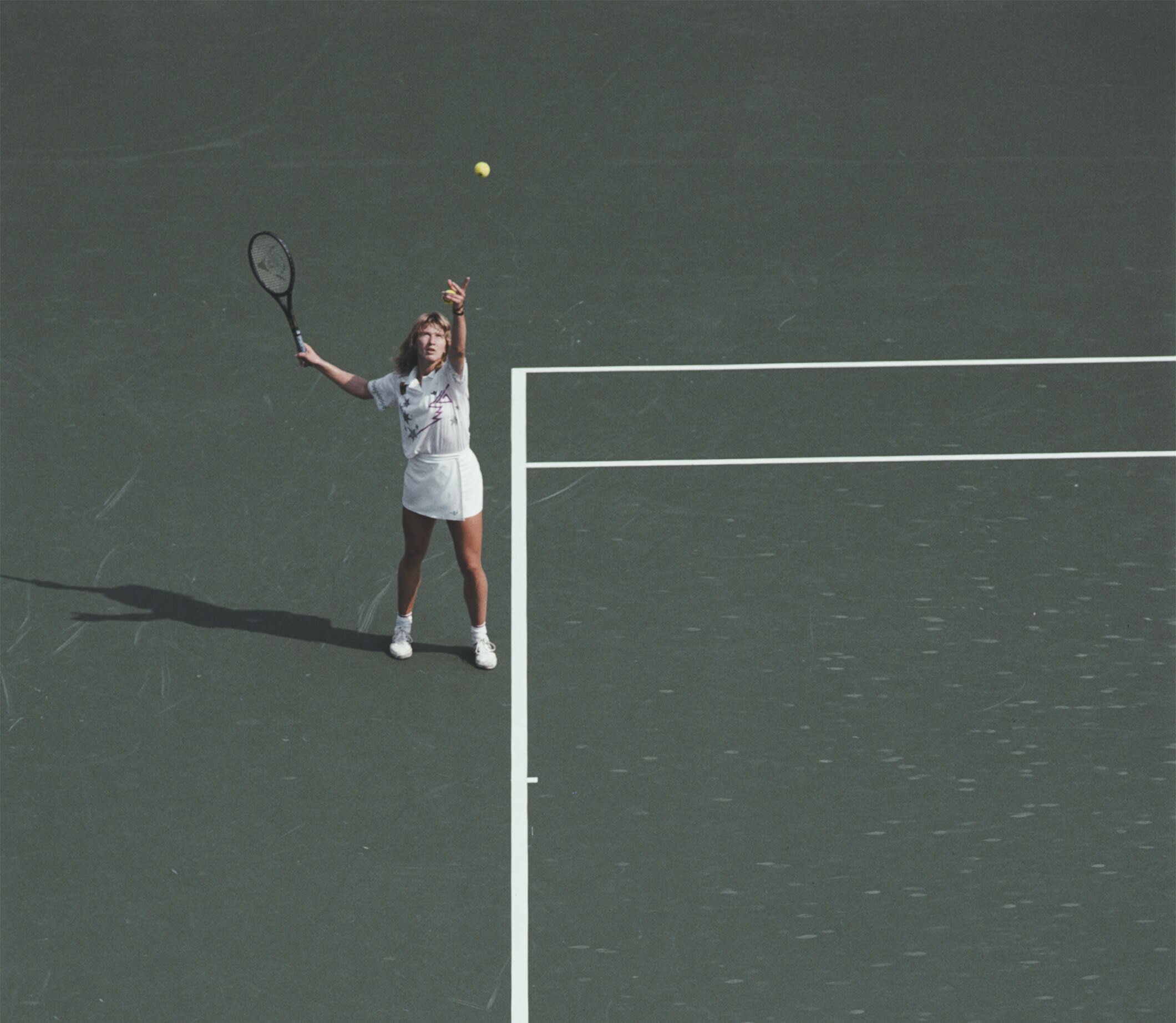Steffi Graf’s 1988 Golden Slam – an unprecedented achievement
On 1 October 1988, in winning the final at the Olympic Games in Seoul, German tennis player Steffi Graf achieved what no one else had done before or has done since. Her gold medal came after victories in the Grand Slam tournaments at Melbourne, Roland Garros, Wimbledon and New York, giving rise to a new term: “the Golden Slam”. The world of tennis is still waiting for another player capable of such a feat in the same calendar year!
Steffi Graf was already world number one, and just shy of 19 years old, when she began the 1988 season. The teenager had taken part at the Los Angeles Games in 1984 when tennis made its Olympic return as a demonstration sport, 60 years after it was dropped from the programme. She claimed a prestigious and symbolic victory in the final against Yugoslavia’s Sabrina Goleš on the courts at the University of California, Los Angeles (UCLA), winning 6-1, 3-6, 6-4.
In 1987, Graf’s career truly took off: she won her first Grand Slam title at Roland Garros, beating world no. 1 Martina Navratilova, and reached two finals, at Wimbledon and the US Open, losing out to Navratilova in both. American star Chris Evert, meanwhile, failed to take a set off Graf in three matches. The German, born on 14 June 1969 in Mannheim, was already showing the qualities that would lead to her being world no. 1 for 186 consecutive weeks from 17 August 1987: incredible footwork, a devastating forehand, an effective backhand and a powerful, reliable serve – an all-round game that proved successful on every surface.

Irrepressible from the Australian Open in January to the US Open in September
On 24 January 1988, on a Rebound Ace surface on Centre Court in Melbourne, Graf took on Evert in the final of the Australian Open. She did not drop a set en route to the final, defeating Czechoslovakia’s Hana Mandlíková in the quarter-final and compatriot Claudia Kohde-Kilsch in the semi-final. In the final, Evert was completely overwhelmed in the first set, losing 6-1. The American then took her opponent to a tie-break in the second set, eventually going down 7-3. First Grand Slam victory of the year for Graf: 6-1, 7-6.
Five months later, the world no. 1 was in peerless form on the clay courts of Roland Garros. Once again, she reached the final without conceding a single set. And on 5 June 1988, the match for the championship against the Soviet Union’s Natasha Zvereva lasted a mere 34 minutes, with Zverera mustering only a few points in a 6-0, 6-0 whitewash. Next up were the grass courts of Wimbledon, where Graf was never in any danger until the final, when she came up against six-time defending champion Navratilova, unbeaten since 1981. The 19-year-old Graf lost the first set 7-5 before getting the measure of her rival and fighting back to take the next two sets 6-2, 6-1.
Then on 11 September in New York, Graf became the first woman to win all four Grand Slam tournaments in the same year since Australia’s Margaret Smith-Court in 1970. Yet again, she dropped a minimal number of games on the DecoTurf surface at Flushing Meadows and took full advantage of Evert’s forfeit in the semi-final. Argentina’s Gabriela Sabatini reached her first ever final, but Graf secured a 6-3, 3-6, 6-1 victory.

History made with the Golden Slam
“The experience of ’88 in Seoul probably stands out, just coming from the US Open where I won the Grand Slam. I had one day to turn around, get home, change and get on the flight to Seoul. And stepping on the plane there was a big group of German athletes on it. It just felt something special that I was going to,” recalls Graf. She was in hard-court action in the capital of the Republic of Korea on 20 September and breezed through the rounds – conceding just one set, against the Soviet Union’s Larissa Savchenko in the quarter-final – before coming up against Sabatini once again in the gold-medal match on 1 October 1988.
Less than three weeks after beating her in New York, Graf inflicted yet another defeat on the Argentinean, giving her no chance with an imposing 6-3, 6-3 victory. “It was important for me to win here,” she said afterwards. She was absolutely right – the term “Golden Slam” was born at that exact moment. Four Grand Slam wins and an Olympic title in the same year – a feat that no male or female player had achieved before or has done since. A commemorative plaque outside the venue in Seoul bears testament to the event: “Historic Place for Golden Slam”.
Only three other players have won the four majors plus the Olympic Games title, and never in the same calendar year. The USA’s Andre Agassi sealed his “Career Golden Slam” with the gold medal at Atlanta 1996, Spain’s Rafael Nadal did so at Beijing 2008 and American Serena Williams completed hers at London 2012. At Tokyo 2020, current world no. 1 Novak Djokovic could do the same if he wins gold, as could Roger Federer if he is involved in the Games. In the women’s tournament, Williams could repeat the achievement if she competes in what will be her fifth Olympic Games. But the world of tennis is still waiting for another player capable of securing a Golden Slam in one year.

Twenty-second Grand Slam title at Roland Garros in 1999 before retiring
Graf, meanwhile, was back to defend her Olympic title on the clay courts of Barcelona 1992, where she took silver after losing to the USA’s Jennifer Capriati in the final. Having also won bronze in the women’s doubles with Claudia Kohde-Kilsch in Seoul, her Olympic record stands at four podium finishes, including two titles – counting the one she won in Los Angeles aged 14 when tennis was a demonstration sport!
Her glittering career saw her occupy the world no.1 spot for a total of 377 weeks (a record), including a run of 186 consecutive weeks between August 1987 and March 1991. She ended the 1987, 1988, 1989, 1990, 1993, 1995, and 1996 tennis seasons as the world’s top-ranked player. In total, she won 22 Grand Slam titles: the Australian Open four times, Roland Garros six times, Wimbledon seven times and the US Open five times. Her rivalries with Yugoslavia’s Monica Seles and Spain’s Arantxa Sánchez Vicario in the 1980s and 1990s have gone down in tennis folklore.

On 5 June 1999, backed by a passionate central court crowd at Roland Garros, Graf won an epic final 6-4, 5-7, 6-2 against world no. 1 Martina Hingis of Switzerland. The following day, Andre Agassi won the men’s singles tournament, coming back from two sets down to beat Russia’s Andrei Medvedev, and he and Graf later started dating. After losing the Wimbledon final against the USA’s Lindsay Davenport that same year, Graf retired from sport in August while she was still world no. 3, having racked up a total of 107 tournament victories. She married fellow Olympic champion Agassi in 2001, and the pair have two children together.
Graf remains one of the greatest champions in the history of her sport. She always said: “I never look back, I look forward,” but she also said: “You can't measure success if you have never failed. My father taught me that if you really do want to reach your goals, you can't spend any time worrying about whether you're going to win or lose. Focus only on getting better.” Extremely sound advice!